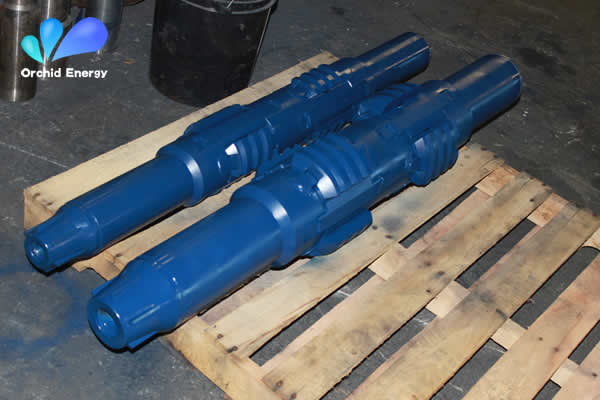Comprehensive Guide to Casing Scrapers in the Oil and Gas Industry
Introduction:
When it comes to ensuring the integrity of well casings in drilling and completion operations, casing scrapers play a vital role. In this blog post, we will provide an in-depth exploration of casing scrapers, including their materials, production processes, different product types, working principles, application scenarios, international product inspection standards, application cases, precautions during use, and maintenance methods. Join us as we delve into the world of casing scrapers and their significance in the oil and gas industry.

1. Materials and Production Processes:
Casing scrapers are generally made of high-quality, durable materials to withstand harsh downhole conditions. Common materials used include heat-treated steel, tungsten carbide, and hardened alloy steel. These materials offer excellent resistance to abrasion, corrosion, and high temperatures.
The production process involves precision machining, heat treatment, and rigorous quality control measures to ensure the desired scraping performance and reliability of the casing scraper.
2. Different Product Types and Working Principles:
Casing scrapers are available in various types, each designed for specific applications and well conditions:
-
Mechanical Casing Scrapers: These scrapers feature blades or brushes that mechanically remove debris, scale, or cement from the inside of the casing. They rely on rotational motion to dislodge and clean the casing walls.
-
Hydraulic Casing Scrapers: These scrapers use fluid pressure to extend blades or brushes against the casing walls, allowing efficient removal of debris. Hydraulic casing scrapers are commonly used when dealing with softer or more challenging formations.
3. Application Scenarios:
Casing scrapers find extensive application in drilling, completions, workover, and well intervention operations. Some common scenarios include:
-
Removing drilling mud, cement, scale, and other obstructions inside the casing.
-
Preparing the casing for wellhead installation.
-
Restoring casing integrity by removing corrosion or damaged sections.
-
Clearing wellbore restrictions caused by debris or collapsed formations.
-
Mitigating casing wear caused by contact with downhole tools.
4. International Product Inspection Standards:
To ensure reliability and performance, casing scrapers generally adhere to international product inspection standards such as API (American Petroleum Institute) standards. These standards define specific criteria for materials, manufacturing processes, dimensional accuracy, performance evaluation, and quality assurance.
5. Application Cases and Precautions:
Casing scrapers have been successfully utilized in numerous drilling and intervention projects worldwide. Case studies showcasing their effectiveness in restoring casing integrity, enhancing well productivity, and preventing costly failures can be found across the industry.
However, it is crucial to exercise caution and adhere to proper usage guidelines while using casing scrapers. Some precautions include:
-
Proper selection of the casing scraper type based on well conditions and objectives.
-
Performing pre-job inspections to ensure the scraper is in optimal condition.
-
Conducting regular monitoring and inspection of the scraper during operation.
-
Adhering to recommended operating parameters such as speed, torque, and weight-on-bit.
-
Training personnel on proper handling and use of casing scrapers.
6. Maintenance Methods:
To prolong the lifespan and optimize performance, regular maintenance of casing scrapers is necessary. Some maintenance methods include:
-
Post-job cleaning and inspection to remove debris and assess any wear or damage.
-
Proper storage to prevent corrosion or degradation of materials.
-
Periodic blade replacement if wear or damage is identified.
-
Lubrication of moving parts to ensure smooth operation.
Casing Scraper Parameters:
| Parameter | Description |
| Scraper Type | Mechanical / Hydraulic |
| Material | Heat-treated steel / Tungsten carbide |
| Blade Configuration | Number, Shape, and Layout |
| Operating Range | Casing Size, Temperature, and Pressure Limits |
| Blade Extension | Adjustable / Fixed |
| Weight | Varies with Size and Configuration |
Conclusion:
Casing scrapers are indispensable tools in the oil and gas industry, ensuring the integrity and productivity of well casings. By understanding their materials, production processes, types, working principles, application scenarios, international standards, precautions, and maintenance methods, operators can effectively utilize casing scrapers to remove debris, restore casing integrity, and optimize drilling and completions operations.
Note: The table provided displays only a few parameters for illustration purposes. A comprehensive table can be created by including additional relevant parameters as per specific requirements.
Tags: Casing Scraper
In this article, we will take you on a journey through the materials, production processes, different product types, working principles, application scenarios, international product inspection standards, application cases, precautions during use, and maintenance methods of casing scrapers.
2023-08-15




